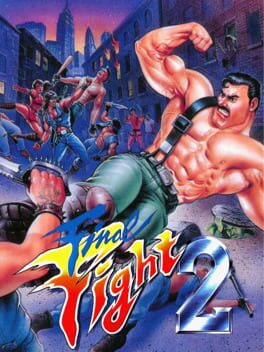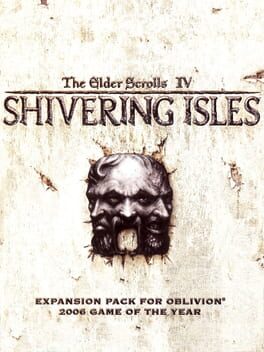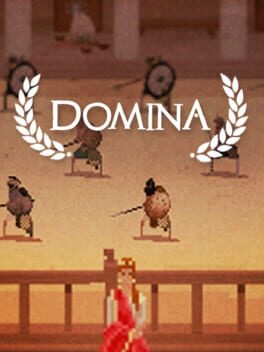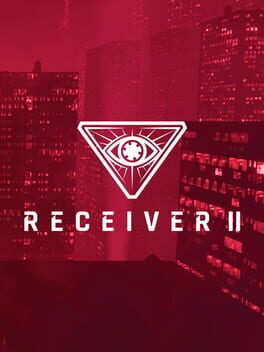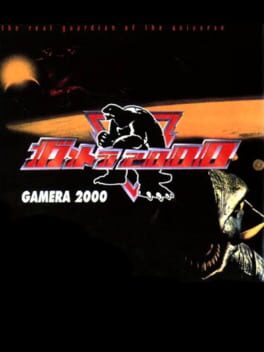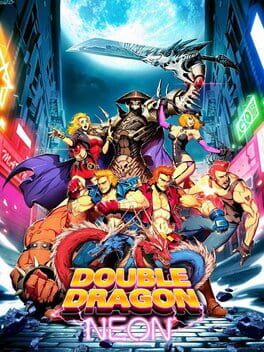FMTownsParty
684 Reviews liked by FMTownsParty
Vib-Ribbon
1999
something about revisiting this made me really grossly emotional. i listened to this ost on a loop for ages before i ever even had the chance to play the game (when it dropped on the ps3 store, cant remember what year that was), so the soundtrack registers more in my mind as one of the definitive shibuya-kei EPs that happens to have a game associated with it. i remember when i finally got to play the game one of the first things i did was put all the CDs my musician friends had made and sent me into my ps3 to play along with their music. this time around i'm able to burn and play my own music the same way.
i guess the song is called overflowing emotions for a reason. thanks vibri <3
i guess the song is called overflowing emotions for a reason. thanks vibri <3
Automaton Lung
2022
One of those games that are somewhat familiar to the hands but refresh the eyes and mind
-One of the last games on a dead Nintendo platform is a collection of unfinished levels, featuring a gameworld that seems to somehow fit a dead Metroid. Well, not dead, an unborn Metroid Prime more like. A copy with no original. An untimely and unborn digital world, a simulation of the worst for those who want to create video games in an industry that demands results and for those who are looking for content and hours of play. throws some sensations that I had with those that already existed in the 80s (Zelda, Xanadu Revival) until the end of the last decade with Connor Sherlock, Kojima and Taro: a ghost zone where the content -if there is any- can kill your interpretive creativity from within, reach an icon, a collectible, a new area and that the reward is emptiness.
Where is the Lore?
Any. There is not.
Constant movement and no linear thinking. I think that is what we need, that they give us less and put more on our part. And now, I know that we give a good part of our energy to overcome challenges and, why not say so? A good deal of our money goes into this, but our meaning comes in many forms.
-I honestly don't know what the title refers to, but playing it in the month in which Splatoon 3 is launched, which finally seems to find something in its own saga -3 deliveries have taken a long time- beyond a more or less original concept and in the that the latest ranges of Graphic Cards are announced at exorbitant prices and... It's just a micro event, yes, let's go with Automated Lungs
-In something if it looks like the first metroid: The world is only transited, you do not get to dominate. The discomfort of moving through this unborn world of unfinished spaces has the consequence that picking up a simple collectible on a narrow catwalk can become a challenge that is highly dependent on our ability to maintain somewhat rigid inertia through the joystick. The character of this reminds me of Nagoshi's Super Monkey Ball (yes)
-I've never laughed so hard at those sections where they put a collectible in a place you can almost touch but it's hidden behind a transparent wall or whatever, in an area only accessible after a hell of a takeshis challenge. Not even VVVVV's. And at the same time a strange terror. And relief. If the void is like that, if the richness and texture of these dead zones is only a catalyst for sensations and the most literal content is scarce, I am relieved.
On the other hand, this void is not as resounding as the literalness that floods the interpretation and design of contemporary video games. I wouldn't blame anyone who saw the game as a product of "a little polished indie series dealing with self-contained challenges" to be honest.
-Negative areas. Dark green void. Towers that lead to cities driven more by a dreamlike sense than by a gamy logic. I go where I want as I can and that scares me, again it's very strange. I am invaded by the thought of how much contemporary pop culture and the era of immediacy have clearly guided us and have marked a path of more evident and linear readings.
I will definitely come back to this game when its PC version comes out
-One of the last games on a dead Nintendo platform is a collection of unfinished levels, featuring a gameworld that seems to somehow fit a dead Metroid. Well, not dead, an unborn Metroid Prime more like. A copy with no original. An untimely and unborn digital world, a simulation of the worst for those who want to create video games in an industry that demands results and for those who are looking for content and hours of play. throws some sensations that I had with those that already existed in the 80s (Zelda, Xanadu Revival) until the end of the last decade with Connor Sherlock, Kojima and Taro: a ghost zone where the content -if there is any- can kill your interpretive creativity from within, reach an icon, a collectible, a new area and that the reward is emptiness.
Where is the Lore?
Any. There is not.
Constant movement and no linear thinking. I think that is what we need, that they give us less and put more on our part. And now, I know that we give a good part of our energy to overcome challenges and, why not say so? A good deal of our money goes into this, but our meaning comes in many forms.
-I honestly don't know what the title refers to, but playing it in the month in which Splatoon 3 is launched, which finally seems to find something in its own saga -3 deliveries have taken a long time- beyond a more or less original concept and in the that the latest ranges of Graphic Cards are announced at exorbitant prices and... It's just a micro event, yes, let's go with Automated Lungs
-In something if it looks like the first metroid: The world is only transited, you do not get to dominate. The discomfort of moving through this unborn world of unfinished spaces has the consequence that picking up a simple collectible on a narrow catwalk can become a challenge that is highly dependent on our ability to maintain somewhat rigid inertia through the joystick. The character of this reminds me of Nagoshi's Super Monkey Ball (yes)
-I've never laughed so hard at those sections where they put a collectible in a place you can almost touch but it's hidden behind a transparent wall or whatever, in an area only accessible after a hell of a takeshis challenge. Not even VVVVV's. And at the same time a strange terror. And relief. If the void is like that, if the richness and texture of these dead zones is only a catalyst for sensations and the most literal content is scarce, I am relieved.
On the other hand, this void is not as resounding as the literalness that floods the interpretation and design of contemporary video games. I wouldn't blame anyone who saw the game as a product of "a little polished indie series dealing with self-contained challenges" to be honest.
-Negative areas. Dark green void. Towers that lead to cities driven more by a dreamlike sense than by a gamy logic. I go where I want as I can and that scares me, again it's very strange. I am invaded by the thought of how much contemporary pop culture and the era of immediacy have clearly guided us and have marked a path of more evident and linear readings.
I will definitely come back to this game when its PC version comes out
Sexy Invaders
1990
they made me work my ass off for a few nip slips. chica featured on the cover is not in the game. im pretty sure girl 2 called me a super pig pilot. reward for completion is a lady gyrating her hips on loop to the credits theme. surprised this made it onto this site given IGDBs policy but the panties stay on at all times in sexy invaders so maybe that's part of the reason why. deeply amusing seeing the nintendo logo before slotting this bad boy in. the intersection of established arcade design & early 90s digital eroticism is as always conceptually interesting but totally insubstantial & boring, at least in practice. they hadnt yet realized that the strongest & most powerful gamers are volcels. lady killer (1993) better
Final Fight 2
1993
everyone even the least bit inquisitive about beat 'em ups as a genre should play this, full stop. i cannot think of a more textbook representation of the idea that for a beat 'em up, encounter design is level design; divergence from this principle in final fight 2 results in perhaps the most anemic beat em up i have ever been subjected to. absolutely lifeless brawling in overlong stages as you contend with wall-to-wall waves of three polite barely dissimilar crooks at a time. devoid of any spirit even compared to some of its home console contemporaries. sure FF2 has a couple of things going for it compared to its predecessor but streets of rage 1 came out two years before this and while it is comparably centered around simplistic crowd control, it thoroughly overpowers this game on the basis of its encounter design, aesthetics, soundtrack, pace, etc. shout outs yuzo koshiro. FF2 does have maki though so who can say whether it's bad or not. bring her back in SF6 capcom i'll be very grateful
Yakuza 0
2015
Intraquartz
2022
if there’s a common element which threads together developer ilzard’s body of work thus far, it’s likely spatial navigation. both words prove relevant. nix umbra immensely complicates its sense of traversal primarily through disorientation and obfuscation. despite the relative frankness of its premise – time-based survival – its mechanics are cloaked enough to ensure that managing to wander undeterred in its shaded woods for even thirteen minutes will comfortably slot you in the top 50 of the title’s global leaderboards. the player’s only choice in nix umbra is to shrewdly maneuver impenetrable darkness, flailing wildly at the binaural screeching of violin strings indicating oncoming threats, and simultaneously attempting to process an occult set of mechanics which intentionally withholds its peculiarities. it’s hard not to reflect on the cosmos while playing, too. obviously traipsing around in pitch-black makes you vaguely feel like you’re navigating some sort of eschatological abyss unknown to man, but one mechanic the game declines to explicate involves using the stars above as a compass guiding you towards health & mana replenishing crystals in the woods. the game’s title translates roughly to “snow shadow” from latin – and as snowfall will occasionally dot the screen, it's difficult not to think of marine snow in the deepest zones of the ocean despite the game’s terrestrial concerns. as above, so below.
intraquartz represents a similar kind of disorienting spatial navigation. it is every bit as concerned with swirling depths as its predecessor is, albeit with a conceit which forces the player to adopt a mindset antithetical to survival in nix umbra. nix umbra’s swift and reactive gameplay recalls the pace of an arena shooter, where daring to stop is flirting with death, but while playing intraquartz it becomes clear that every action taken must be carefully weighed and considered, often for seconds at a time. this is because instead of obscuring your vision to a couple of meters ahead of you as in nix umbra, intraquartz renders every single path within the game’s various crystals completely invisible. nix umbra’s cold, apocalyptic void is substituted for the celestial gossamer of gems, each containing a microscopic, alien, and seemingly expansive inner galaxy. within each gemstone is a complex network of invisible tunnels which spiral endlessly, threatening to fold inwards on themselves. lateral movement is impossible because you take control of a rover, which forces the player to commit to wise decisions, and the player only has a select number of tools to aid them in mining the alien energy present in the crystals: distance-based coordinates, a refracting laser, a limited number of markers, and a limited number of quantum jumps.
so begins the process of orienting oneself and efficiently mapping out the twists and turns of each particular cavern. extracting even one energy core imposes a movement-based time limit on the rover as the crystal begins to destabilize, which incentivizes the player to have a rough outline of the crystal’s inner network before beginning the excavation process. energy cores which seem directly ahead of the player are likely blocked by some invisible wall or tunnel, forcing the intrepid rover to not simply bypass it, but to go under and over and around and then some – each detour is the full nine yards. markers allow for the player to either carefully breadcrumb their way around dizzying and dazzling labyrinths, or to lob shots and test the depths of the tunnels. refracting lasers can be used with surgical precision to reach tucked away energy cores as they perpetually ricochet off walls (a really commendable system given its smooth implementation), and quantum jumps aid in closing gaps that the rover would struggle with otherwise. each tool is perfectly considered and complementary in ways that reveal themselves to the player with each hour invested, and as such intraquartz becomes a game of mastery. the most coveted score for each level involves extracting each energy core without moving the rover, save for quantum jumps – an arduous task for a beginner, but a worthy challenge for the experienced. planning extensively to reach this offers satisfaction like nothing else can provide.
it's really admirable that the procedural generation utilized for the game’s energy cores ensures that this is not a game about strict puzzle solving, but rather a game about adaptive problem solving. there’s an argument to be made that once your brain is attuned to this game’s language it can sometimes feel a bit too much like second nature, but right up until that point it’s one of the most exhilarating games of 2022. at times soothing in its diligent pace, at times heartpounding when facing all-but-certain destabilization, and always an audiovisual tour de force about the worlds in grains of sand.
felt a pleasant sense of mirth when i saw the name of the final level. so excited for ilzard’s third outing!
intraquartz represents a similar kind of disorienting spatial navigation. it is every bit as concerned with swirling depths as its predecessor is, albeit with a conceit which forces the player to adopt a mindset antithetical to survival in nix umbra. nix umbra’s swift and reactive gameplay recalls the pace of an arena shooter, where daring to stop is flirting with death, but while playing intraquartz it becomes clear that every action taken must be carefully weighed and considered, often for seconds at a time. this is because instead of obscuring your vision to a couple of meters ahead of you as in nix umbra, intraquartz renders every single path within the game’s various crystals completely invisible. nix umbra’s cold, apocalyptic void is substituted for the celestial gossamer of gems, each containing a microscopic, alien, and seemingly expansive inner galaxy. within each gemstone is a complex network of invisible tunnels which spiral endlessly, threatening to fold inwards on themselves. lateral movement is impossible because you take control of a rover, which forces the player to commit to wise decisions, and the player only has a select number of tools to aid them in mining the alien energy present in the crystals: distance-based coordinates, a refracting laser, a limited number of markers, and a limited number of quantum jumps.
so begins the process of orienting oneself and efficiently mapping out the twists and turns of each particular cavern. extracting even one energy core imposes a movement-based time limit on the rover as the crystal begins to destabilize, which incentivizes the player to have a rough outline of the crystal’s inner network before beginning the excavation process. energy cores which seem directly ahead of the player are likely blocked by some invisible wall or tunnel, forcing the intrepid rover to not simply bypass it, but to go under and over and around and then some – each detour is the full nine yards. markers allow for the player to either carefully breadcrumb their way around dizzying and dazzling labyrinths, or to lob shots and test the depths of the tunnels. refracting lasers can be used with surgical precision to reach tucked away energy cores as they perpetually ricochet off walls (a really commendable system given its smooth implementation), and quantum jumps aid in closing gaps that the rover would struggle with otherwise. each tool is perfectly considered and complementary in ways that reveal themselves to the player with each hour invested, and as such intraquartz becomes a game of mastery. the most coveted score for each level involves extracting each energy core without moving the rover, save for quantum jumps – an arduous task for a beginner, but a worthy challenge for the experienced. planning extensively to reach this offers satisfaction like nothing else can provide.
it's really admirable that the procedural generation utilized for the game’s energy cores ensures that this is not a game about strict puzzle solving, but rather a game about adaptive problem solving. there’s an argument to be made that once your brain is attuned to this game’s language it can sometimes feel a bit too much like second nature, but right up until that point it’s one of the most exhilarating games of 2022. at times soothing in its diligent pace, at times heartpounding when facing all-but-certain destabilization, and always an audiovisual tour de force about the worlds in grains of sand.
felt a pleasant sense of mirth when i saw the name of the final level. so excited for ilzard’s third outing!
Hitman 2
2018
hi every1 im new!!!!!!! holds up fork (of horriplation) my name is sheogorath but u can call me t3h D@3dRik pRiN¢3 of m@dn3$$!!!! lol...as u can see im very random!!!! thats why i summoned u, 2 meet random ppl like me_... im 1000000000000000000000000000 years old (im mature for my age tho!!) i like to eat cheese w my boyfreind haskill (im gay if you dont like it deal with it) its our favorite food!!!!!! bcuz its SOOOO random!!!!!! hes random 2 of course but i want 2 meet more random subjects =) like they say the more the merrier!!!! lol…neways i hope 2 derange alot of freinds here so give me lots of your body partses!!!! CHEESE 4 EVERY1!!!!!!!!!!!!!!!! <--- me bein random again _^ hehe…toodles!!!!!
love and sweetrolls,
t3h D@3dRik pRiN¢3 of m@dn3$$
love and sweetrolls,
t3h D@3dRik pRiN¢3 of m@dn3$$
Domina
2017
Developer is so unhinged that the infamously hands-off Valve banned them from posting in their own game's forums, so they've taken to posting their 1. transphobic, 2. anti-masker, and 3. conspiracy theory-laden ramblings in the patch notes, one of which has been marked as a "MAJOR UPDATE" (lol) on Steam, simply titled "DONE"
Some links for those of you who would prefer to see the evidence:
- Imgur album of their Steam ""updates"" - fair warning, these are genuinely hateful
- Their now-banned Twitter account
- from the dev's steam profile lmao
RIP BOZO. fuckin loser
Some links for those of you who would prefer to see the evidence:
- Imgur album of their Steam ""updates"" - fair warning, these are genuinely hateful
- Their now-banned Twitter account
- from the dev's steam profile lmao
RIP BOZO. fuckin loser
Stray
2022
Notes on Stray forcefully anti-intellectuals because it is necessary to think about video games outside the logic of video games or something like that
-I talk too much about spaces, their construction and exploration and I barely realize how important the height and size we use to move through it is, but I have always felt that small avatars are a little more interesting. Maybe because I'm 1.85, I have no idea.
-When Stray was released I saw a tweet that said something like "it's a game about being a cat but in BoTW you move more like a cat" or something like that. I found it a bit ridiculous because it seemed to disdain Stray's navigation based on pseudo-realistic logic, but in BoTW almost any surface is "sticky" and you can scale it like a lizard. That's not very catty bro
-The environments are excellent on their own, but they also seem to me to be an excellent architecture that reflects the dilemma of the automata.
There is a lot of beauty in walking around the district and just sitting next to any inhabitant, a robot, an npc, a mannequin. an inhabitant.
Why fool ourselves, if the game had been a cat Playground most of GamersTm would have been annoyed for not having objectives, "nothing to do".
goodoo.
-The complaint of many is that the game should have been a playground instead of a directed adventure with some freeform moments. I think so too, but against everything I believed, I ended up liking the direction, despite being quite conventional.
-Creating a fictional world through the aesthetic and cultural appropriation of countries with problematic political pasts (is there a country that does not have it?) can be problematic, but it is true that many countries have done it to a greater or lesser extent. It doesn't matter how; Turbo-capitalist revisions of Marie Antoinette of Austria, JRPGs with bucolic aesthetics or those martial arts movies where completely anachronistic techniques and movements are shown. Perhaps it would matter more WHO takes that culture to use it as background and decoration
-Alexis Ong's text isn't bad to be honest
-Sisi Jiang's text wouldn't be bad either. But back to the same.
It's not that I want to play the parry that we should be permissive with the romanticization (and appropriation) of a problematic aesthetic and culture for the sake of a freer and more experimental fiction... But if I'm doing it a little?? maybe?
Why complaining about the appropriation of pizza or the word (k)Otaku would be silly but doing it about Hong Kong architecture is smart?
-In the past, some Asian countries, by necessity or imposition, have also absorbed too much Western culture, now they appropriate it and, by necessity or because of the turbo-capitalism in which we live, they market their own culture.
I apologize if this may offend anyone but it is something that I see very real.
-I talk too much about spaces, their construction and exploration and I barely realize how important the height and size we use to move through it is, but I have always felt that small avatars are a little more interesting. Maybe because I'm 1.85, I have no idea.
-When Stray was released I saw a tweet that said something like "it's a game about being a cat but in BoTW you move more like a cat" or something like that. I found it a bit ridiculous because it seemed to disdain Stray's navigation based on pseudo-realistic logic, but in BoTW almost any surface is "sticky" and you can scale it like a lizard. That's not very catty bro
-The environments are excellent on their own, but they also seem to me to be an excellent architecture that reflects the dilemma of the automata.
There is a lot of beauty in walking around the district and just sitting next to any inhabitant, a robot, an npc, a mannequin. an inhabitant.
Why fool ourselves, if the game had been a cat Playground most of GamersTm would have been annoyed for not having objectives, "nothing to do".
goodoo.
-The complaint of many is that the game should have been a playground instead of a directed adventure with some freeform moments. I think so too, but against everything I believed, I ended up liking the direction, despite being quite conventional.
-Creating a fictional world through the aesthetic and cultural appropriation of countries with problematic political pasts (is there a country that does not have it?) can be problematic, but it is true that many countries have done it to a greater or lesser extent. It doesn't matter how; Turbo-capitalist revisions of Marie Antoinette of Austria, JRPGs with bucolic aesthetics or those martial arts movies where completely anachronistic techniques and movements are shown. Perhaps it would matter more WHO takes that culture to use it as background and decoration
-Alexis Ong's text isn't bad to be honest
-Sisi Jiang's text wouldn't be bad either. But back to the same.
It's not that I want to play the parry that we should be permissive with the romanticization (and appropriation) of a problematic aesthetic and culture for the sake of a freer and more experimental fiction... But if I'm doing it a little?? maybe?
Why complaining about the appropriation of pizza or the word (k)Otaku would be silly but doing it about Hong Kong architecture is smart?
-In the past, some Asian countries, by necessity or imposition, have also absorbed too much Western culture, now they appropriate it and, by necessity or because of the turbo-capitalism in which we live, they market their own culture.
I apologize if this may offend anyone but it is something that I see very real.
Receiver 2
2020
tap, rack, bang.
essentially an extended exercise in bullet meditation. its arcade-esque structure belies how much rigor and alertness receiver 2 demands of its players regardless of how uncompromising the randomized threats can be. most games become faster as you improve, but receiver 2 instead gets slower; refining your play here often means being methodical, taking your time, steadfastly running through your keyboard rituals as though they were rosary prayer beads, surveying environments carefully, and retaining a stalwart level of composure against the odds. brilliant map design evokes a constant dread & claustrophobia by endlessly looping hallways of industrial boiler rooms, penthouse apartments, and construction scaffolding, suggesting both subconscious impermanence and familiarity ('you' have had gunfights here before, sometime, somewhere else). you're thirty floors up in this intensely alienating, inescapable nightmare realm and the only one who can save yourself is you. and things continue in this genuinely frightening way until you learn to start flipping the script and turning the stringent limitations of its level design into opportunity. whether that means having a quick exit plan between floors, shimmying across ledges to avoid detection, or bolting and jumping through a window to avoid a barrage of turret fire. this isn't even yet digging into the intensely granular gun mechanics - the long and short of it is that by so sternly forcing players to abide by its ruleset, receiver 2's simulacrum is one of the sharpest games to ever transpose ideas of mindfulness onto a set of mechanics. a good few too many games about mental health only demand faux-resilience through narrative affect or through memorizing sequences of buttons in simplistic twitch platforming fashion, but receiver 2's interweaving of constant repetition and punishing failure reveals a strict & cohesive prescription and regimen: your mind and body have to be in sync if you're gonna stand any real shot out there.
tap, rack, bang.
generally speaking, in martial arts, a weapon is an extension of your body. it's cliche, but holds true. the only way to master a sword is to consider it as a limb. and in other games this is, i would argue, felt as a guiding philosophy. thinking and problem-solving is abstracted across these body-oriented mechanics. lavish one-button reload animations in games have conditioned players into seeing a gun as an extension of the player; i've argued in the past that leon in resident evil 4 is a particularly good example of this. a rifle to leon is as central to his kit as a knife, a grenade, a herb, a roundhouse kick, all executed with more or less the same mechanical apparatus.
tap, rack, bang.
receiver 2 brings guns and mental health to the forefront, but it shrewdly elides the easy question or metaphor regarding the grisly culture surrounding firearms in the united states to instead focus on your simulated gun as an extension of your mind and the implications of that idea in a diseased sociopolitical climate. reloading has been calibrated across not just one key, but several, and each gun will have different quirks or tics to master in this regard. revolvers are simple and reliable, but slower to reload and less equipped to deal with multiple threats, whereas the automatic pistols have more complex inputs in tandem with more versatility, but similarly present more opportunities to malfunction (and yes, your guns will jam in multiple different ways - good luck diagnosing and treating that while threats have their watchful eyes on you). likewise, dozens of other minor nuances are present: a colt m1911 has a safety switch, but when using a glock that same key is utilized to turn the glock's full-auto feature on, so holstering unsafely with a glock you attempted to make safe means your thigh is about to eat two or three bullets. without weapon acumen you are every bit as likely to kill or incapacitate yourself as a turret or drone is likely to gore you.
tap, rack, bang.
the central structure of receiver 2 revolves around the collection of analog tapes concerning firearms history, media representations of guns, common logical and emotional fallacies, and tips for maintaining a more lucid mind. these tapes are randomized and don't explicitly spell out their associations given how wildly varying they can be, but its lessons and mantras all hone in on a few key ideas which are subsequently internalized over the unfolding hours. the act of physically pointing and shooting has been entirely stripped of context and weight - what has this gratuitousness and gratification done to us? we live in a fractured environment which has the potential to fracture ourselves in turn - how can we safeguard ourselves against these negative influences? just as there are rules in place for the safe operation of a firearm, so too are there rules for the exercise of one's mind. and if you can safely train to have a mind impervious to adversity, you can begin to survive and aid others in survival.
tap, rack, bang.
receiver 2 is mechanically, narratively, and artistically sympatico in a way very few games have achieved. its prescription of an analog remedy for the digitized nightmare we've slowly come to inhabit over the past couple of decades is novel and commendable, regardless of a couple of minor issues i have with the game's prose (that said you will find no other game which explicitly draws a parallel between the birth/subsequent expansion of the universe and a chambered round shot in the dark). and it is a game presented with total earnestness and clarity regarding its subject matter. few sequels expand on the core concept as meaningfully as receiver 2 - a third game would be redundant, but its ending gracefully reminds us that the work we've set in motion doesn't end with our investment in these abstracted life-or-death scrambles. we break free, and we are made to live with the lessons we have slowly accumulated and grasped. "perfection is attained by slow degrees; it requires the hand of time". excellent stuff.
tap, rack, bang.
your mind's eye sharpens.
essentially an extended exercise in bullet meditation. its arcade-esque structure belies how much rigor and alertness receiver 2 demands of its players regardless of how uncompromising the randomized threats can be. most games become faster as you improve, but receiver 2 instead gets slower; refining your play here often means being methodical, taking your time, steadfastly running through your keyboard rituals as though they were rosary prayer beads, surveying environments carefully, and retaining a stalwart level of composure against the odds. brilliant map design evokes a constant dread & claustrophobia by endlessly looping hallways of industrial boiler rooms, penthouse apartments, and construction scaffolding, suggesting both subconscious impermanence and familiarity ('you' have had gunfights here before, sometime, somewhere else). you're thirty floors up in this intensely alienating, inescapable nightmare realm and the only one who can save yourself is you. and things continue in this genuinely frightening way until you learn to start flipping the script and turning the stringent limitations of its level design into opportunity. whether that means having a quick exit plan between floors, shimmying across ledges to avoid detection, or bolting and jumping through a window to avoid a barrage of turret fire. this isn't even yet digging into the intensely granular gun mechanics - the long and short of it is that by so sternly forcing players to abide by its ruleset, receiver 2's simulacrum is one of the sharpest games to ever transpose ideas of mindfulness onto a set of mechanics. a good few too many games about mental health only demand faux-resilience through narrative affect or through memorizing sequences of buttons in simplistic twitch platforming fashion, but receiver 2's interweaving of constant repetition and punishing failure reveals a strict & cohesive prescription and regimen: your mind and body have to be in sync if you're gonna stand any real shot out there.
tap, rack, bang.
generally speaking, in martial arts, a weapon is an extension of your body. it's cliche, but holds true. the only way to master a sword is to consider it as a limb. and in other games this is, i would argue, felt as a guiding philosophy. thinking and problem-solving is abstracted across these body-oriented mechanics. lavish one-button reload animations in games have conditioned players into seeing a gun as an extension of the player; i've argued in the past that leon in resident evil 4 is a particularly good example of this. a rifle to leon is as central to his kit as a knife, a grenade, a herb, a roundhouse kick, all executed with more or less the same mechanical apparatus.
tap, rack, bang.
receiver 2 brings guns and mental health to the forefront, but it shrewdly elides the easy question or metaphor regarding the grisly culture surrounding firearms in the united states to instead focus on your simulated gun as an extension of your mind and the implications of that idea in a diseased sociopolitical climate. reloading has been calibrated across not just one key, but several, and each gun will have different quirks or tics to master in this regard. revolvers are simple and reliable, but slower to reload and less equipped to deal with multiple threats, whereas the automatic pistols have more complex inputs in tandem with more versatility, but similarly present more opportunities to malfunction (and yes, your guns will jam in multiple different ways - good luck diagnosing and treating that while threats have their watchful eyes on you). likewise, dozens of other minor nuances are present: a colt m1911 has a safety switch, but when using a glock that same key is utilized to turn the glock's full-auto feature on, so holstering unsafely with a glock you attempted to make safe means your thigh is about to eat two or three bullets. without weapon acumen you are every bit as likely to kill or incapacitate yourself as a turret or drone is likely to gore you.
tap, rack, bang.
the central structure of receiver 2 revolves around the collection of analog tapes concerning firearms history, media representations of guns, common logical and emotional fallacies, and tips for maintaining a more lucid mind. these tapes are randomized and don't explicitly spell out their associations given how wildly varying they can be, but its lessons and mantras all hone in on a few key ideas which are subsequently internalized over the unfolding hours. the act of physically pointing and shooting has been entirely stripped of context and weight - what has this gratuitousness and gratification done to us? we live in a fractured environment which has the potential to fracture ourselves in turn - how can we safeguard ourselves against these negative influences? just as there are rules in place for the safe operation of a firearm, so too are there rules for the exercise of one's mind. and if you can safely train to have a mind impervious to adversity, you can begin to survive and aid others in survival.
tap, rack, bang.
receiver 2 is mechanically, narratively, and artistically sympatico in a way very few games have achieved. its prescription of an analog remedy for the digitized nightmare we've slowly come to inhabit over the past couple of decades is novel and commendable, regardless of a couple of minor issues i have with the game's prose (that said you will find no other game which explicitly draws a parallel between the birth/subsequent expansion of the universe and a chambered round shot in the dark). and it is a game presented with total earnestness and clarity regarding its subject matter. few sequels expand on the core concept as meaningfully as receiver 2 - a third game would be redundant, but its ending gracefully reminds us that the work we've set in motion doesn't end with our investment in these abstracted life-or-death scrambles. we break free, and we are made to live with the lessons we have slowly accumulated and grasped. "perfection is attained by slow degrees; it requires the hand of time". excellent stuff.
tap, rack, bang.
your mind's eye sharpens.
Gamera 2000
1997
Ridge Racer Type 4
1998
Can you feel the heat?
When the tires kiss the street
Move into the beat
Ever since I learned about occlusion culling, a technique deftly handled by Naughty Dog with their first PlayStation 1 title, Crash Bandicoot, my appreciation for the more graphically stellar titles for the system was granted a new shade. It helped offer me a frame of reference (granted, of one of the more extreme use cases) for the necessity to obscure unneeded geometry to save what precious few resources the console could afford - as well as giving me something to mull over whenever I play a 3D PS1 game that looks suspiciously good. Much akin to Crash Bandicoot, racing games benefit from what is essentially a densely curated linear track. With limited camera movement, every attainable viewing angle can be accurately poured over by the designers, letting them carefully weigh up exactly how much they can get away with at every meter of game space. This is very apparent in visually stunning racing titles like Wipeout 3, Colin McRae Rally 2.0, and Need for Speed: High Stakes; their tracks are glutted with turns, verticality and obstacles that exist to obscure as much model pop-in as possible, and offer a new piece of visual stimuli at every turn. This has a knock-on effect for how these tracks are actually driven on, too. Track designers are by necessity discouraged from long straightaways where the world noticeably phases into existence, and instead ensure that the player has very little if any downtime from cornering, maintaining a thrilling tempo that only stops when the chequered flag is waved. I say all this, because I really do miss the era where racing games were these hardware-defying explosions of style and skill, with enough big-money backing to allow the designers to let their perfectionism and neuroses get tangled in the engine’s crankshaft. I can only go in a straight line down a massive realistic unreal engine map for so long.
Anyway. Ridge Racer Type 4 is a Swiss watch. One of very, very few games I’d describe as “meticulous”. Every one of its moving parts serves a key purpose in its grand design. Its mechanisms are the result of painstaking consideration for the most minute details. Built to last, and never lose its sheen. The only game my dad likes (real). It all just moves & breathes with this air of confidence and romance, exemplified by the way the penultimate setpiece is the final lap taking place at the exact turn of the millennium - a genuinely affecting gesture to barrel through doubt and seize your future by any means.
One thing I’m particularly taken by is the overall stylistic presentation of Type 4. Among the first things you see upon loading it up are the game’s signature tail/headlight afterglows leaving trails across the screen. The preamble at the start of this review was for no reason other than the fact that R4 actualises the PS1. Its environments use every trick in the book with a healthy serving of incredible models & baked-in textures to make the world feel rich beyond the scope of the road. The game’s UI alone is worth studying for its consistent use of very few colours, empty-space and minimalist decoration (every game needs a "PLEASE" in the corner at all times). In establishing a universe that seemingly exists solely for the purpose of racing fictional cars around the fictional Ridge City, the developers at Namco have populated the series with a mountain of logos, icons, banners, signs, patterns, manufacturers, liveries and colour palettes. They work to establish the curves, hills and tunnels as very real places with a history all their own. How did Wonderhill get its name? Why is it called Shooting Hoops? Where are these places in Ridge City and how do they fit into the Ridge Racer universe?
Look at the Helter Skelter track’s logo, for instance. One of the things I enjoy about this logo is its deceptively simple construction that results in a complex visual illusion of sorts. Essentially, the structure is a series of circles that reduce in size from top to bottom. The circles do not change shape in the slightest, only in scale, and by removing their intersections and filling in some minor spaces to complete the shape, is this illusion achieved. It harkens to the track’s multi-levelled nature, conveying a sense of movement as you rapidly weave through overpasses and underground tunnels w/ the ferocity of a hurricane.
The whole game is like this. A veritable archive of mindful audio, visual and game design, of weapons-grade artistic talent. Beyond aspirational and genuinely medium affirming.
When the tires kiss the street
Move into the beat
Ever since I learned about occlusion culling, a technique deftly handled by Naughty Dog with their first PlayStation 1 title, Crash Bandicoot, my appreciation for the more graphically stellar titles for the system was granted a new shade. It helped offer me a frame of reference (granted, of one of the more extreme use cases) for the necessity to obscure unneeded geometry to save what precious few resources the console could afford - as well as giving me something to mull over whenever I play a 3D PS1 game that looks suspiciously good. Much akin to Crash Bandicoot, racing games benefit from what is essentially a densely curated linear track. With limited camera movement, every attainable viewing angle can be accurately poured over by the designers, letting them carefully weigh up exactly how much they can get away with at every meter of game space. This is very apparent in visually stunning racing titles like Wipeout 3, Colin McRae Rally 2.0, and Need for Speed: High Stakes; their tracks are glutted with turns, verticality and obstacles that exist to obscure as much model pop-in as possible, and offer a new piece of visual stimuli at every turn. This has a knock-on effect for how these tracks are actually driven on, too. Track designers are by necessity discouraged from long straightaways where the world noticeably phases into existence, and instead ensure that the player has very little if any downtime from cornering, maintaining a thrilling tempo that only stops when the chequered flag is waved. I say all this, because I really do miss the era where racing games were these hardware-defying explosions of style and skill, with enough big-money backing to allow the designers to let their perfectionism and neuroses get tangled in the engine’s crankshaft. I can only go in a straight line down a massive realistic unreal engine map for so long.
Anyway. Ridge Racer Type 4 is a Swiss watch. One of very, very few games I’d describe as “meticulous”. Every one of its moving parts serves a key purpose in its grand design. Its mechanisms are the result of painstaking consideration for the most minute details. Built to last, and never lose its sheen. The only game my dad likes (real). It all just moves & breathes with this air of confidence and romance, exemplified by the way the penultimate setpiece is the final lap taking place at the exact turn of the millennium - a genuinely affecting gesture to barrel through doubt and seize your future by any means.
One thing I’m particularly taken by is the overall stylistic presentation of Type 4. Among the first things you see upon loading it up are the game’s signature tail/headlight afterglows leaving trails across the screen. The preamble at the start of this review was for no reason other than the fact that R4 actualises the PS1. Its environments use every trick in the book with a healthy serving of incredible models & baked-in textures to make the world feel rich beyond the scope of the road. The game’s UI alone is worth studying for its consistent use of very few colours, empty-space and minimalist decoration (every game needs a "PLEASE" in the corner at all times). In establishing a universe that seemingly exists solely for the purpose of racing fictional cars around the fictional Ridge City, the developers at Namco have populated the series with a mountain of logos, icons, banners, signs, patterns, manufacturers, liveries and colour palettes. They work to establish the curves, hills and tunnels as very real places with a history all their own. How did Wonderhill get its name? Why is it called Shooting Hoops? Where are these places in Ridge City and how do they fit into the Ridge Racer universe?
Look at the Helter Skelter track’s logo, for instance. One of the things I enjoy about this logo is its deceptively simple construction that results in a complex visual illusion of sorts. Essentially, the structure is a series of circles that reduce in size from top to bottom. The circles do not change shape in the slightest, only in scale, and by removing their intersections and filling in some minor spaces to complete the shape, is this illusion achieved. It harkens to the track’s multi-levelled nature, conveying a sense of movement as you rapidly weave through overpasses and underground tunnels w/ the ferocity of a hurricane.
The whole game is like this. A veritable archive of mindful audio, visual and game design, of weapons-grade artistic talent. Beyond aspirational and genuinely medium affirming.
Double Dragon Neon
2012
the other side of the coin for shredder's revenge. there's three specific shared traits here: both are coasting the wavelength of 80's arcade revivalism, both ameliorate the shortcomings and deficiencies of the parent franchises they spawned from, and both have had to adapt to tailor their mechanics for the home console market.
comparisons between the two don't seem to yield much in the way of positives for DDN. DDN is aesthetically crude, borne from an era in which ironic 80s pastiche was in vogue; shredder's revenge doesn't echo the same insincerity, instead brimming with love for the source material. DDN's sense of humor is juvenile and irksome, while shredder's revenge stands tall on its innate charisma. and while DDN introduces misguided moveset customization and a baffling + unnecessary upgrade system, shredder's revenge has a comparatively simple solution to the levelling dilemma that has plagued beat 'em ups since their transition from the arcade environment: relegate it entirely to story mode and allow players to level up simply through accumulating defeated foes. speaking of, shredder's revenge has both a story and an arcade mode, while DDN has...only a story mode. if you wanna 1CC, get ready to uh, take no damage, or something. we're working off an honor system here.
a plethora of problems, sure. but ultimately, the key difference between the two is really simple: DDN is more compelling as a beat 'em up, despite its foibles. whatever stiffness is felt in its opening chapters is wrung out by the finale. where shredder's revenge is loose and centered on player empowerment, DDN asks the player to engage with the mechanics on its terms. and there's a comprehensive strictness to these systems that engenders a genuine sense of reward when you find that one strategy that'll help overcome a grating section, or when you discover tech that'll aid in combos, or when you learn how to navigate its effective encounter design. it's one of those beat 'em ups where every tool in your arsenal feels like it has both general and niche use, where every weapon pickup feels like a godsend - but you still gotta swing that bat carefully.
one helpful point of comparison is the existence of a dodge in both games. in 2D beat 'em up circles, dodges have a crummy reputation because in the best case scenario, they dilute encounter design and defensive mechanics to telegraphed avoidances of attacks, and in the worst case scenario they break the game on its hinges completely. the dodge in shredder's revenge is apt given the number of aggressive enemies on screen, and tribute did well to imbue it with heft through recovery frames, but it's also still distinctly weightless. you float into offence, sway back with a dodge, and tap the attack button again to leap back into the fray and continue your assault.
while you'll have to avoid attacks by jumping and moving horizontally/vertically, there's two kinds of dedicated dodges in DDN, both of which are cumbersome. the first, and most interesting, is a god hand-esque duck. throw jabs in someone's grill, and duck if you register a high attack being thrown your way to maintain offence. given the recovery frames involved, and the danger of immediate punishment if you fail, there's a higher sense of risk involved with the duck than can sometimes be said for shredder's revenge. but there's genuine reward, too - wayforward gave it meaning by greatly increasing your damage for an extremely minute window of time upon a successful attack, which deftly encourages meticulous aggression. and you'll be needing that damage boost, because enemy hp has been tuned just so - they're not damage sponges, but offence doesn't guarantee security because the microseconds you spend wailing on a guy is plenty of time for some other enemy to waltz in on you and ruin the fun. DDN has this sense that you're flirting with danger constantly, that you're never actually safe - it's pretty remarkable how they were able to subtly achieve this.
and so DDN is able to fold its dodge into acute positioning - the secret formula for every good beat 'em up. after initiating a duck, you can dodge roll (which seems to have very selective iframes), or you can opt for a low-damage grounded attack or a high damage flying knee. every option here is grounded in decision-making filtered through positioning. to roll through certain attacks, i have to have the foresight to duck in advance. sure, i want to cancel a duck into a flying knee for my juggle - but if i do that, i'll jump right into a pit, or a stage hazard. the list of minute calculations goes on, and it's why this clicked for me in a way i couldn't with shredder's revenge.
if you'll forgive its aged aesthetic (leaving aside kaufman's score - your mileage still might vary but theres still at least a couple of standouts imo) what you find is a beat 'em up that understands the genre finds life through restriction. and you can't ask for more than that.
comparisons between the two don't seem to yield much in the way of positives for DDN. DDN is aesthetically crude, borne from an era in which ironic 80s pastiche was in vogue; shredder's revenge doesn't echo the same insincerity, instead brimming with love for the source material. DDN's sense of humor is juvenile and irksome, while shredder's revenge stands tall on its innate charisma. and while DDN introduces misguided moveset customization and a baffling + unnecessary upgrade system, shredder's revenge has a comparatively simple solution to the levelling dilemma that has plagued beat 'em ups since their transition from the arcade environment: relegate it entirely to story mode and allow players to level up simply through accumulating defeated foes. speaking of, shredder's revenge has both a story and an arcade mode, while DDN has...only a story mode. if you wanna 1CC, get ready to uh, take no damage, or something. we're working off an honor system here.
a plethora of problems, sure. but ultimately, the key difference between the two is really simple: DDN is more compelling as a beat 'em up, despite its foibles. whatever stiffness is felt in its opening chapters is wrung out by the finale. where shredder's revenge is loose and centered on player empowerment, DDN asks the player to engage with the mechanics on its terms. and there's a comprehensive strictness to these systems that engenders a genuine sense of reward when you find that one strategy that'll help overcome a grating section, or when you discover tech that'll aid in combos, or when you learn how to navigate its effective encounter design. it's one of those beat 'em ups where every tool in your arsenal feels like it has both general and niche use, where every weapon pickup feels like a godsend - but you still gotta swing that bat carefully.
one helpful point of comparison is the existence of a dodge in both games. in 2D beat 'em up circles, dodges have a crummy reputation because in the best case scenario, they dilute encounter design and defensive mechanics to telegraphed avoidances of attacks, and in the worst case scenario they break the game on its hinges completely. the dodge in shredder's revenge is apt given the number of aggressive enemies on screen, and tribute did well to imbue it with heft through recovery frames, but it's also still distinctly weightless. you float into offence, sway back with a dodge, and tap the attack button again to leap back into the fray and continue your assault.
while you'll have to avoid attacks by jumping and moving horizontally/vertically, there's two kinds of dedicated dodges in DDN, both of which are cumbersome. the first, and most interesting, is a god hand-esque duck. throw jabs in someone's grill, and duck if you register a high attack being thrown your way to maintain offence. given the recovery frames involved, and the danger of immediate punishment if you fail, there's a higher sense of risk involved with the duck than can sometimes be said for shredder's revenge. but there's genuine reward, too - wayforward gave it meaning by greatly increasing your damage for an extremely minute window of time upon a successful attack, which deftly encourages meticulous aggression. and you'll be needing that damage boost, because enemy hp has been tuned just so - they're not damage sponges, but offence doesn't guarantee security because the microseconds you spend wailing on a guy is plenty of time for some other enemy to waltz in on you and ruin the fun. DDN has this sense that you're flirting with danger constantly, that you're never actually safe - it's pretty remarkable how they were able to subtly achieve this.
and so DDN is able to fold its dodge into acute positioning - the secret formula for every good beat 'em up. after initiating a duck, you can dodge roll (which seems to have very selective iframes), or you can opt for a low-damage grounded attack or a high damage flying knee. every option here is grounded in decision-making filtered through positioning. to roll through certain attacks, i have to have the foresight to duck in advance. sure, i want to cancel a duck into a flying knee for my juggle - but if i do that, i'll jump right into a pit, or a stage hazard. the list of minute calculations goes on, and it's why this clicked for me in a way i couldn't with shredder's revenge.
if you'll forgive its aged aesthetic (leaving aside kaufman's score - your mileage still might vary but theres still at least a couple of standouts imo) what you find is a beat 'em up that understands the genre finds life through restriction. and you can't ask for more than that.



